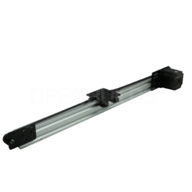V-Slot™ Nema 23 Linear Actuator Build (Belt Driven)
Discussion in 'Other Builds' started by Mark Carew, Nov 14, 2018.
V-Slot™ Nema 23 Linear Actuator (Belt Driven)
Discussion in 'Other Builds' started by Mark Carew, Nov 14, 2018.
This example build shows how easy it is to make a linear actuator using a few OpenBuilds Parts.
Page 1 of 2
Page 1 of 2
